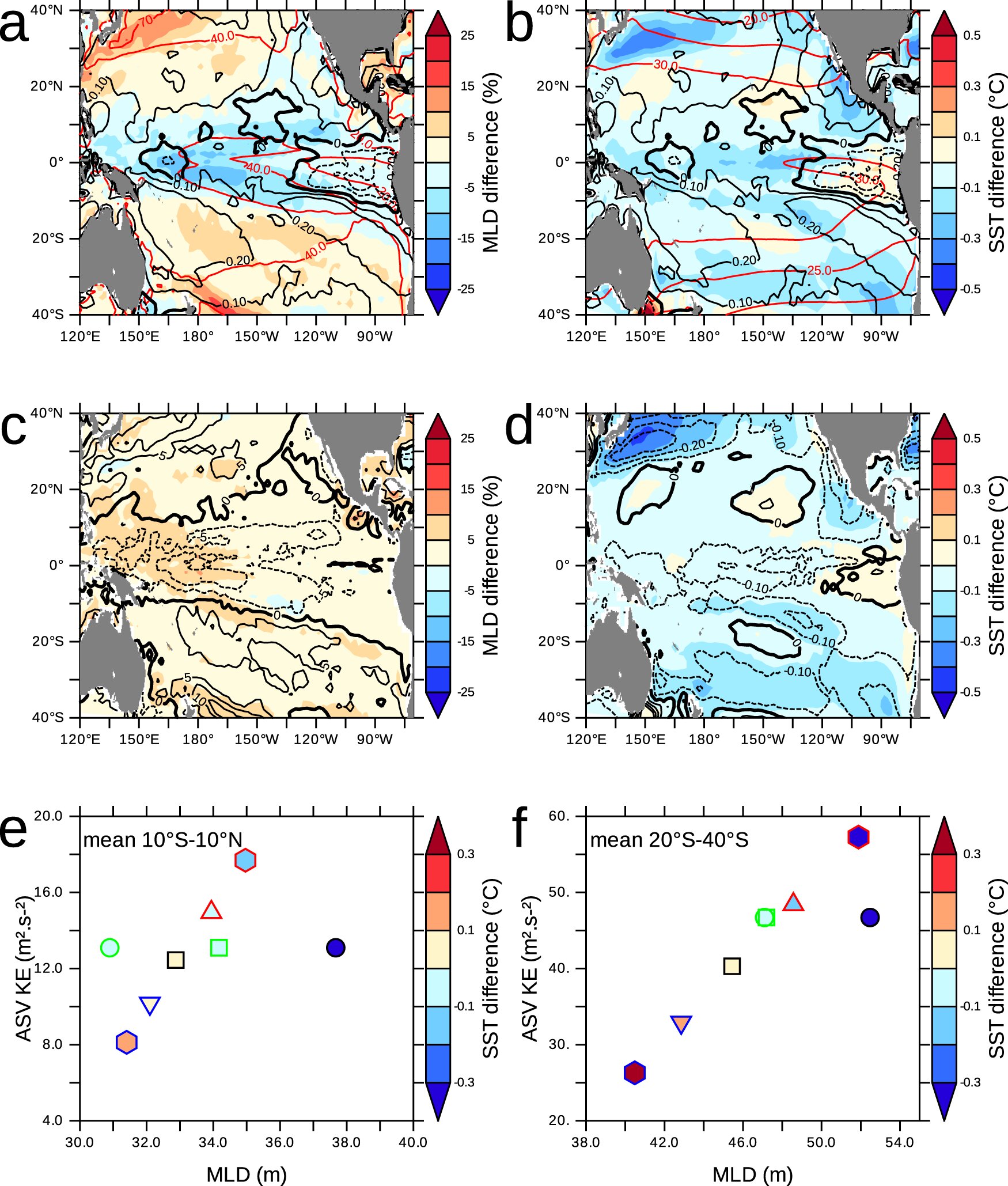The strength of the wind has an important influence on ocean circulation. This is particularly true for extreme events such as storm fronts, tropical storms and cyclones. These weather patterns, which last from a few days to a few weeks, will change in the future due to climate change. In particular, the average energy input into the ocean from mid-latitude storms is expected to decrease, while equatorial regions will become more active. Scientists call these different weather patterns “Atmospheric Synoptic Variability” (ASV).
Two climate researchers—Dr. Olaf Duteil from the GEOMAR Helmholtz Center for Ocean Research Kiel and Professor Dr. Wonsun Park from the IBS Center for Climate Physics and Pusan National University, Korea—have now for the first time investigated the integrated effects of long-term changes in these weather patterns on the Pacific basin in a modeling study. The results show how important it is to take these changes into account in climate models. They have now published their findings in the journal npj Climate and Atmospheric Science.
From a climate point of view, the weather is usually considered as “noise” and is not systematically analyzed in long-term climate projections, say the two researchers. “However, it is not enough to look at average atmospheric properties, such as mean wind speeds, to understand the influence of climate change on the ocean,” says Duteil, “it is crucial to consider the cumulative effect of short-term changes in weather patterns to get a complete picture.”
The researchers expect that future changes in Atmospheric Synoptic Variability will affect the mixing of the ocean’s layers, as a smaller or larger input of kinetic energy into the ocean due to weather phenomena will lead to less or more mixing, respectively. The researchers predict that the reduction in ASV in subtropical regions will lead to a shallowing of the mixing layer in the ocean, while it will become deeper at the equator as ASV increases
They also show that a future reduction in ASV decreases the strength of oceanic circulation systems—the so-called subtropical and tropical cells—and the large-scale ocean circulation. These systems connect mid-latitudes and equatorial latitudes via upper ocean pathways. They are driven by the trade winds north and south of the equator, regulate the upwelling of equatorial waters and play a fundamental role in determining the surface temperature of the oceans and thus primary productivity in the tropics.
This study highlights the need to better quantify ASV and weather patterns in climate models, as changes in ASV have a large impact on future upper ocean circulation and mean properties. Duteil states, “This quantification should be used to improve our confidence in projections of future climate, especially when analyzing large ensembles of climate models.”
More information:
Olaf Duteil et al, Future changes in atmospheric synoptic variability slow down ocean circulation and decrease primary productivity in the tropical Pacific Ocean, npj Climate and Atmospheric Science (2023). DOI: 10.1038/s41612-023-00459-3
Citation:
Study investigates impact of extreme weather events on ocean circulation in tropical Pacific (2023, October 13)
retrieved 13 October 2023
from https://phys.org/news/2023-10-impact-extreme-weather-events-ocean.html
This document is subject to copyright. Apart from any fair dealing for the purpose of private study or research, no
part may be reproduced without the written permission. The content is provided for information purposes only.
Denial of responsibility! TechCodex is an automatic aggregator of the all world’s media. In each content, the hyperlink to the primary source is specified. All trademarks belong to their rightful owners, and all materials to their authors. For any complaint, please reach us at – [email protected]. We will take necessary action within 24 hours.

Jessica Irvine is a tech enthusiast specializing in gadgets. From smart home devices to cutting-edge electronics, Jessica explores the world of consumer tech, offering readers comprehensive reviews, hands-on experiences, and expert insights into the coolest and most innovative gadgets on the market.


